 W
WThe French occupation of Malta lasted from 1798 to 1800. It was established when the Order of Saint John surrendered to Napoleon Bonaparte following the French landing in June 1798. In Malta, the French established a constitutional tradition in Maltese history, granted free education for all, and theoretically established freedom of the press, although only the pro-French newspaper Journal de Malte was actually published during the occupation.
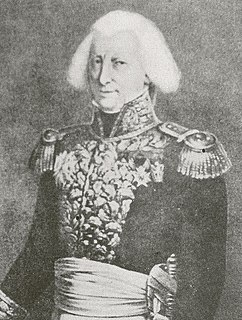 W
WClaude-Henri Belgrand de Vaubois was a French general during the French Revolutionary Wars and the Napoleonic Wars. On 20 August 1808 he was created Comte de Belgrand de Vaubois. Later, his name was inscribed on the Arc de Triomphe in Paris.
 W
WVincenzo Maria Borg, also known by his nickname Brared, was a Maltese merchant who was one of the main insurgent leaders during the French blockade of 1798–1800. He was a lieutenant from 1801 until he was deposed in January 1804.
 W
WCapuchin Convent Battery, also known as Kalkara Battery, was an artillery battery in Kalkara, Malta, built by Maltese insurgents during the French blockade of 1798-1800. It was part of a chain of batteries, redoubts and entrenchments encircling the French positions in Marsamxett and the Grand Harbour.
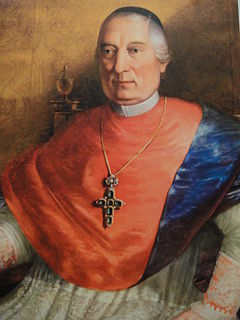 W
WFrancesco Saverio Caruana was a Maltese prelate who was Bishop of Malta from 1831 to his death in 1847. He was also a rebel leader during the Maltese uprising of 1798–1800.
 W
WThe Corradino Batteries were a series of artillery batteries on Corradino Heights, near Paola, Malta, that were built by Maltese insurgents during the French blockade of 1798-1800. The batteries formed part of a chain of batteries, redoubts and entrenchments encircling the French positions in Marsamxett and the Grand Harbour.
 W
WPierre Jean Louis Ovide Doublet was a French politician and writer who spent much of his life serving in the Knights of Malta. Following his enlistment as a soldier, he entered the service of the French Secretariat of the Knights and was eventually promoted to the leadership of the Secretariat.
 W
WThe French invasion of Malta was the successful invasion of the islands of Malta and Gozo, then ruled by the Order of St. John, by the French First Republic led by Napoleon in June 1798 as part of the Mediterranean campaign of the French Revolutionary Wars.
 W
WGħargħar Battery, also known as Ta' Ittuila Battery and Ta' Xindi Battery, was an artillery battery in present-day San Ġwann, Malta, built by Maltese insurgents during the French blockade of 1798–1800. It was part of a chain of batteries, redoubts and entrenchments encircling the French positions in Marsamxett and the Grand Harbour.
 W
WThe Gozitan Nation, commonly known as Gozo, was an unrecognised state located on the island of Gozo between 1798 and 1801 during the French Revolutionary Wars. It was a monarchy ruled by King Ferdinand III of Sicily with a provisional government led by Governor-general Saverio Cassar. Its capital was Rabat. The country was established between 28 and 29 October 1798 from the territory of French-occupied Malta and was eventually incorporated into Malta Protectorate on 20 August 1801.
 W
WJesuit Hill Battery, also known as Jesuit Battery or Point Cortin Battery, was an artillery battery in Marsa, Malta, built by Maltese insurgents during the French blockade of 1798–1800. It was part of a chain of batteries, redoubts and entrenchments encircling the French Military's position in Marsamxett and the Grand Harbour.
 W
WThe Journal de Malte was Malta's first newspaper, and it was published between July and September 1798 during the French occupation of Malta. Written in French and Italian, a total of ten issues of the newspaper are believed to have been published, although only seven seem to still survive today and it is unclear if the other three are lost or if they were ever actually published at all.
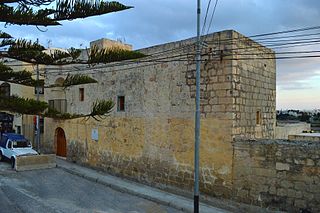 W
WThe siege of Malta, also known as the siege of Valletta or the French blockade, was a two-year siege and blockade of the French garrison in Valletta and the Three Cities, the largest settlements and main port on the Mediterranean island of Malta, between 1798 and 1800. Malta had been captured by a French expeditionary force during the Mediterranean campaign of 1798, and garrisoned with 3,000 men under the command of Claude-Henri Belgrand de Vaubois. After the British Royal Navy destroyed the French Mediterranean Fleet at the Battle of the Nile on 1 August 1798, the British were able to initiate a blockade of Malta, assisted by an uprising among the native Maltese population against French rule. After its retreat to Valletta, the French garrison faced severe food shortages, exacerbated by the effectiveness of the British blockade. Although small quantities of supplies arrived in early 1799, there was no further traffic until early 1800, by which time starvation and disease was having a disastrous effect on health, morale, and combat capability of the French troops.
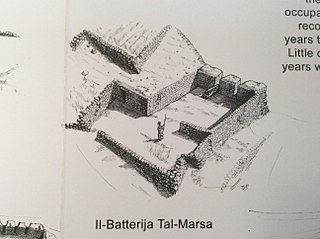 W
WMarsa Battery was an artillery battery in Marsa, Malta, built by Maltese insurgents during the French blockade of 1798-1800. It was part of a chain of batteries, redoubts and entrenchments encircling the French positions in Marsamxett and the Grand Harbour.
 W
WThe National Congress Battalions, also known as the Truppe di Campagna, was an irregular military set up in Malta just after the Maltese rebellion against French rule in September 1798. It existed for two years before being disbanded on 11 September 1800.
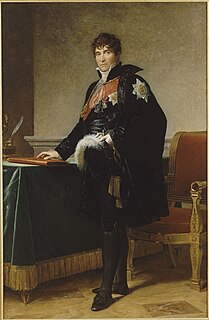 W
WMichel Louis Etienne Regnaud, later 1st Count Regnaud de Saint-Jean d'Angély was a French politician.
 W
WSaint Julian's Tower, originally known as Torre di San Giuliano and also known as Sliema Tower, is a small watchtower in Sliema, Malta. It was completed in 1658 as the fifth of the De Redin towers. An artillery battery was built around the tower in 1715. Today, the tower and the remains of the battery are a restaurant.
 W
WFort San Lucian, also known as Saint Lucian Tower or Fort Rohan, is a large bastioned watchtower and polygonal fort in Marsaxlokk, Malta. The original tower was built by the Order of Saint John between 1610 and 1611, being the second of six Wignacourt towers.
 W
WFort San Lucian, also known as Saint Lucian Tower or Fort Rohan, is a large bastioned watchtower and polygonal fort in Marsaxlokk, Malta. The original tower was built by the Order of Saint John between 1610 and 1611, being the second of six Wignacourt towers.
 W
WSaint Peter's Battery was an artillery battery in Kalkara, Malta, built by Maltese insurgents during the French blockade of 1798–1800. It was part of a chain of batteries, redoubts and entrenchments encircling the French positions in Marsamxett and the Grand Harbour.
 W
WSan Rocco Battery was an artillery battery in Kalkara, Malta, built by Maltese insurgents during the French blockade of 1798–1800. It was the last in a chain of batteries, redoubts and entrenchments encircling the French positions in Marsamxett and the Grand Harbour. It was built to control the entrance to the harbour as well as the French occupied Fort Ricasoli. The battery was continually being fired upon from the French at Ricasoli.
 W
WSan Rocco Redoubt was a redoubt in Kalkara, Malta. It was built by Great Britain during the French blockade of 1798-1800. It was part of a chain of batteries, redoubts and entrenchments encircling the French positions in Marsamxett and the Grand Harbour.
 W
WTa' Għemmuna Battery was an artillery battery in St. Julian's, Malta, that was built by Maltese insurgents during the French blockade of 1798–1800. The battery was located at Dragonara Point, in front of the Hospitaller entrenchments at Spinola. The battery had a large parapet with nine embrasures and a magazine. It was armed with seven guns, which had been taken from St. Mary's Tower and St. Paul's Bay.
 W
WTa' Xindi Farmhouse, also known as the Ta' Xindi Headquarters and Kappara Outpost, is an 18th-century farmhouse built during the Order of St. John in San Ġwann, Malta. It was originally designed to be a farmhouse but went through different adaptive reuse.
 W
WTal-Borg Battery was an artillery battery near Tarxien, Malta, built by Maltese insurgents during the French blockade of 1798–1800. It was part of a chain of batteries, redoubts and entrenchments encircling the French positions in Marsamxett and the Grand Harbour.
 W
WTas-Samra Battery was an artillery battery in Ħamrun, Malta, built by Maltese insurgents during the French blockade of 1798–1800. It was part of a chain of batteries, redoubts and entrenchments encircling the French positions in Marsamxett and the Grand Harbour.
 W
WWindmill Redoubt was a redoubt in Żabbar, Malta. It was built by Maltese insurgents during the French blockade of 1798–1800. It was part of a chain of batteries, redoubts and entrenchments encircling the French positions in Marsamxett and the Grand Harbour.
 W
WDun Mikiel Xerri was a Maltese patriot. He was baptised Mikael Archangelus Joseph in the parish church of Zebbug on 30 September 1737, the son of Bartholomew Xerri and his wife Anne. Xerri studied at different universities in Europe. He lived under both the Knights of St. John during their time in Malta and the French when they took over the Maltese Islands. He was involved in an unsuccessful revolt to overthrow French rule under Napoleon Bonaparte for which he, together with other locals, was executed on 17 January 1799 at the age of 61.
 W
WThe Żabbar Batteries and Redoubt were a series of artillery batteries and a redoubt in Żabbar, Malta, built by Maltese insurgents during the French blockade of 1798–1800. They formed part of a chain of batteries, redoubts and entrenchments encircling the French positions in Marsamxett and the Grand Harbour.
 W
WThe Żejtun Batteries were a series of artillery batteries in Żejtun, Malta, built by Maltese insurgents during the French blockade of 1798–1800. They were part of a chain of batteries, redoubts and entrenchments encircling the French positions in Marsamxett and the Grand Harbour.